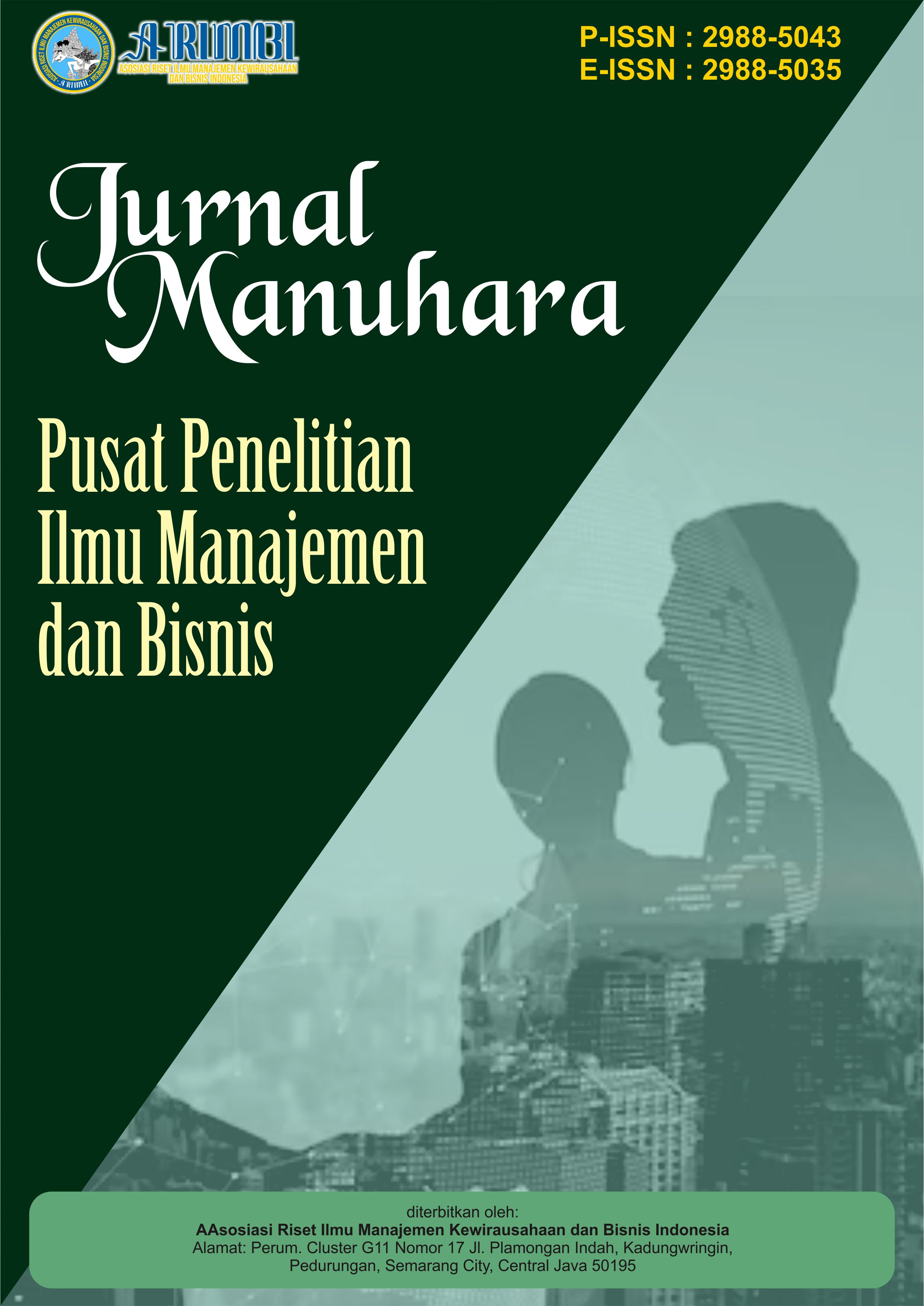Strategi Pengembangan Usaha Daur Ulang Siecraft Menggunakan Analisis SWOT untuk Meningkatkan Efisiensi di Pasar Lokal dan Global
DOI:
https://doi.org/10.61132/manuhara.v3i4.2175Keywords:
Business development, Business ethics, Reycycling, Siecraft, SWOTAbstract
This study aims to analyze the business development strategy of Siecraft, a creative that transforms waste into environmentally friendly and marketable products. The research uses a qualitative method with a case study approach through in-depth interviews, observation, documentation, and the distribution of questionnaires to 30 respondents. The analysis focuses on production, finance, marketing, and human resources, supported by a SWOT analysis. The results show that Siecraft’s main strengths lie in its unique products, use of waste materials, and social value. However, weaknesses remain in digital promotion and production management. The SWOT analysis places the business in Quadrant I (aggressive strategy). Development strategies are directed toward product innovation, improving digital promotion quality, and expanding partnerships to support business sustainability. However, despite these strengths, the business faces several challenges. The weaknesses identified include limited digital promotion efforts and inefficient production management. These areas require urgent attention to enhance overall business performance and market visibility. Furthermore, the SWOT analysis places Siecraft in Quadrant I, signifying an aggressive growth strategy. This suggests that the company should capitalize on its current strengths while addressing its weaknesses to achieve sustainable growth. The recommended development strategies include focusing on product innovation to keep up with market trends and customer demands. Improving the quality of digital marketing efforts is also crucial to expand its customer base and reach new markets. Additionally, expanding partnerships with other businesses and organizations can provide the necessary resources and networks to foster sustainability and long-term success. Overall, the business development strategy aims to strengthen Siecraft’s competitive edge and promote environmental consciousness while achieving financial success.
Downloads
References
Amang, M., Mulyadi, & Utama, A. P. (2023). Strategi Pengembangan Bisnis. Yogyakarta: Sulur Pusaka.
Ambarwati, R., Hasanah, N., & Syahrani. (2023). Strategi perkembangan usaha dalam mengelola daur ulang botol plastik menjadi sofa botik yang ramah lingkungan di Cempaka Banjarbaru. Jurnal Pengabdian Masyarakat: Pemberdayaan, Inovasi dan Perubahan, 3(4), 38-42. https://doi.org/10.59818/jpm.v3i2.450
Arlofa, N., et al. (2024). Inovasi usaha kerajinan: Strategi pengadaan dan pengembangan SDM di sektor daur ulang plastik. Jurnal Prosiding Seminar Nasional Pengabdian Masyarakat, 4(3), 67-72. https://doi.org/10.30656/senama.v1i.11
Farhah, A., et al. (2023). Analisis strategi pengembangan usaha UMKM pada usaha roti anget di Kabupaten Bogor. Muqaddimah: Jurnal Ekonomi, Manajemen, Akuntansi dan Bisnis, 1(1), 112-124. https://doi.org/10.59246/muqaddimah.v1i1.81
Hidayat, N. S., Pratiwi, N. A., & Rizkiyah, N. D. (2024). Manajemen Operasi dan Produksi. Kota Penerbit: Yayasan Cendikia Mulia Mandiri.
Ngatni. (2018). Manajemen Pemasaran. Semarang: EF Press Digimedia.
Rohmawati, S., & Wijaya, F. (2024). Formulasi perancangan strategi pengembangan usaha pada UMKM Gula Dezan Berkah dengan business model canvas dan analisis SWOT. Jurnal Nasional Manajemen Pemasaran & Sumber Daya Manusia, 5(2), 184-198. https://doi.org/10.47747/jnmpsdm.v5i2.1830
Satriadi. (2024). Manajemen Keuangan. Sumatera Barat: CV Azka Pustaka.
Silaen, N. R., Nurlaeli, A., & Asir, M. (2022). Manajemen Sumber Daya Manusia. Bandung: Widiana Bhakti Persada.
Sugiyono. (2018). Metode Penelitian Bisnis. Bandung: Alfabeta.
Sugiyono. (2019). Metode Penelitian Manajemen. Bandung: Alfabeta.
Sugiyono. (2020). Metode Penelitian Kuantitatif dan Kualitatif. Bandung: Alfabeta.
Yanti, E. R., et al. (2024). Pemberdayaan pemulung melalui pengembangan produk daur ulang dan meningkatkan kemandirian usaha serta kesejahteraannya. Jurnal Penelitian dan Pengabdian Masyarakat, 2(1), 107-117. https://doi.org/10.61231/jp2m.v2i1.218
Yudiyanto, E., Tania, A. L., & Lusi, A. (2019). Pengolaan Sampah: Pengabdian Pendampingan di Kota Metro. Metro: Sai Wawai Publishing.
Yuliamir, H., Rahayu, E., & Aprilliyani, R. (2024). Pengembangan usaha kreatif melalui pemanfaatan daur ulang sampah rumah tangga di Bank Sampah Wares Salatiga. Jurnal Pengabdian Masyarakat Bangsa, 2(4), 1205-1216. https://doi.org/10.59837/jpmba.v2i4.962
Downloads
Published
How to Cite
Issue
Section
License
Copyright (c) 2025 Jurnal Manuhara : Pusat Penelitian Ilmu Manajemen dan Bisnis

This work is licensed under a Creative Commons Attribution-ShareAlike 4.0 International License.






